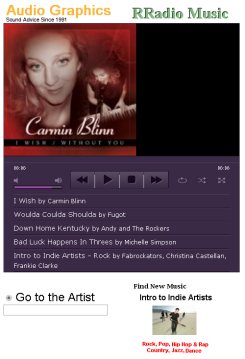![]()
The Online Radio Cavalry
The switch was thrown. The "Rodney Dangerfield" of online radio is dead. Live365 posted its final words on a simple home page: Seventeen sweet years ago, it was something of a revolution to let anyone launch their own station. Anyone with something to say or play. Live365 provided the tools. Their talent brought the audience. We were one of the first. Happy we are not the last. The spirit of 300+ employees over the years, our hundred thousand webcasters, and their hundred million dedicated listeners lives on. THANK YOU for being here.
| This was a good bunch of people who worked a long time laying groundwork for the internet radio companies getting headlines today. |

|
I was honored to consult Live365, in days when it had a few thousand more stations than was last reported. The data work was eye-opening, and as ground breaking as the company's concept of giving every person the ability to play radio.
Some station owners did more than play. Carlos Santana had his own Live365 station. The company was the backbone for the Oprah Winfrey online radio endeavor. Many other recognizable names could be placed on its list of clients and, yet, it still had to close the doors: investor burnout, performance royalties. There are many reason why. We won't talk about them here.
The topic du jour is what may end up being online radio's cavalry. It's something Audio Graphics has been involved with since creating RRadio Music in 2003. If online independent radio stations are to survive, they MUST reach out to an indie artist community that's willing to sign royalty waivers.
While CRB's latest ruling is void of the Small Webcaster Settlement Act (SWSA), it holds a provision that allows a station to reduce its monetary obligation through artist waiver: By way of example, if a service transmitted one hour of programming containing Performances to 10 listeners, the service's ATH would equal 10. If 3 minutes of that hour consisted of transmission of a directly licensed recording, the service's ATH would equal 9 hours and 30 minutes.

|
RRadio Music has built a library of quality songs, across multiple genres, from artists who have signed waivers giving stations the right to use this music free. |

"Airplay for Exposure" is what I call this. It gets back to the way music used to be chosen for radio airplay: based on quality, not a corporation making deals with record companies.
At RRadio Music, a station may download free music or "Intro to Indie Artists" programs that cost nothing more than the station's effort to identify the artist. Quid pro quo: Stations help artists gain exposure. Artists help stations by making it economically feasible to run an online radio station.
Live365 is gone. Rdio, ditto. And there are hundreds of other stations which have come and gone (or are about to go) due to the onerous performance royalty rates. These are too high to be paid through extremely weak ad-revenue sales.
The cavalry for independent radio is in joining forces with artists, who are going to find it increasingly more difficult to get exposure on the dwindling number of major internet radio players.
It's time to decide if you're going to fold or change. (I'm now having stations build entire playlists, of hundreds of songs, through just those artists listed at RRadio Music.)
Survival for the smaller online radio station is not a question of making enough in ad revenue to pay for royalties; it's finding artists who place value on reaching its audience.
"Airplay for Exposure" is a fair trade for all.
Monday, January 1, 2016

Today's artist introduction is to Pop from Tierney Allen.

Give "When You're In Love" a listen.
Stations: Add it to your playlist, free.




